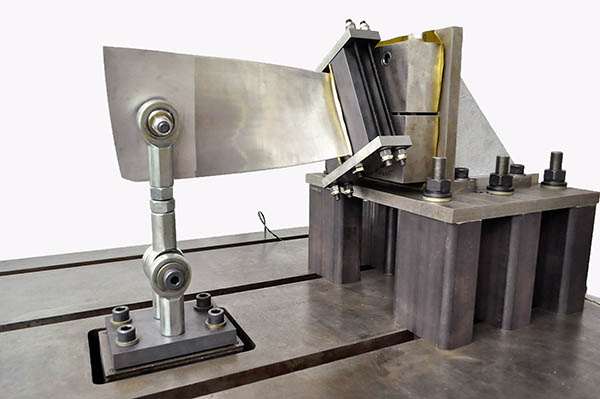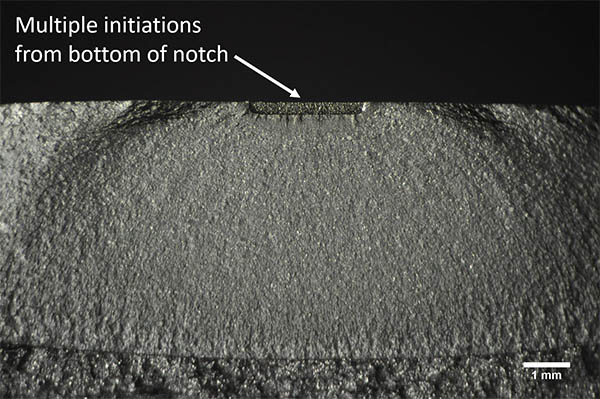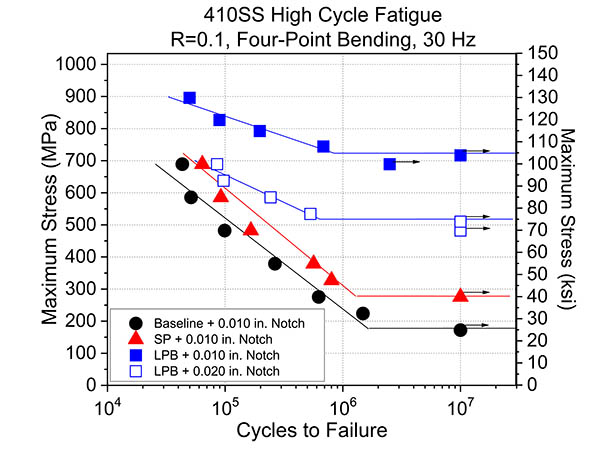Fatigue Testing
Fatigue testing plays a critical role in determining component durability and provides the means for designing and optimizing surface treatments.
Fatigue is a common failure mechanism characterized by the initiation and propagation of cracks due to cyclic loading. Fatigue testing illustrates the influence of residual stress and cold work on material and component fatigue strength.
High cycle fatigue failures generally occur after an accumulation of more than 10^4 cycles and are caused by applied stresses within the material’s elastic limit. In contrast, low cycle fatigue characterizes by cyclic loading resulting in plastic deformation.
Fatigue testing, both high-cycle, and low-cycle is a mechanical test method that cyclic loading is applied to a test coupon or component. A well-designed and executed fatigue test can simulate in-service alternating and mean applied stresses of an element and can be used to assess performance accurately.
How is it Measured?
Lambda provides high cycle and low cycle fatigue testing capabilities for feature specimens, coupons, and actual production components.
Testing the failure at a range of applied stress values allows for the development of stress versus cycles to failure (S-N curves). The parts are processed with different surface treatments and inflicted with varying types and degrees of surface damage such as simulated foreign object damage, fretting, or corrosion.
High-cycle fatigue tests can quickly run out to many fatigue cycles on machines operating at 30 hertz. Large displacement servohydraulic testing machines use low cycle testing applications and loading orientations like 4-point bend, 3-point bend, axial, and cantilever loading to achieve custom fixturing for component testing.
Features:
- High and low cycle fatigue testing characterizes residual stress influence on fatigue strength and damage tolerance
- Design and manufacture fatigue test specimens and fixtures
- A custom designed feature for specimens for measuring the effects of residual compression on fatigue strength of unique geometries
- Up to 50,000 lb load capacity
- Testing with simulated damage such as foreign object damage (FOD) and corrosion
- Active corrosion testing
- Elevated temperature testing
- Continuous compliance monitoring
- Instrumentation of component specimens for accurate monitoring of stress
- Video capture of crack propagation
- Rotating Beam Fatigue (R.R. Moore style tester)

HCF Component Testing of a Turbine Blade

Fracture Face of HCF Failure Initiating from Simulated Damage

S-N Plot Comparing HCF Results of 410SS Samples with Various Surface Treatments and Simulated Damage
Questions about Fatigue Testing?

